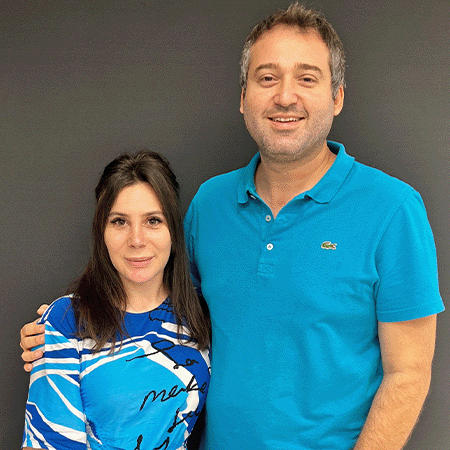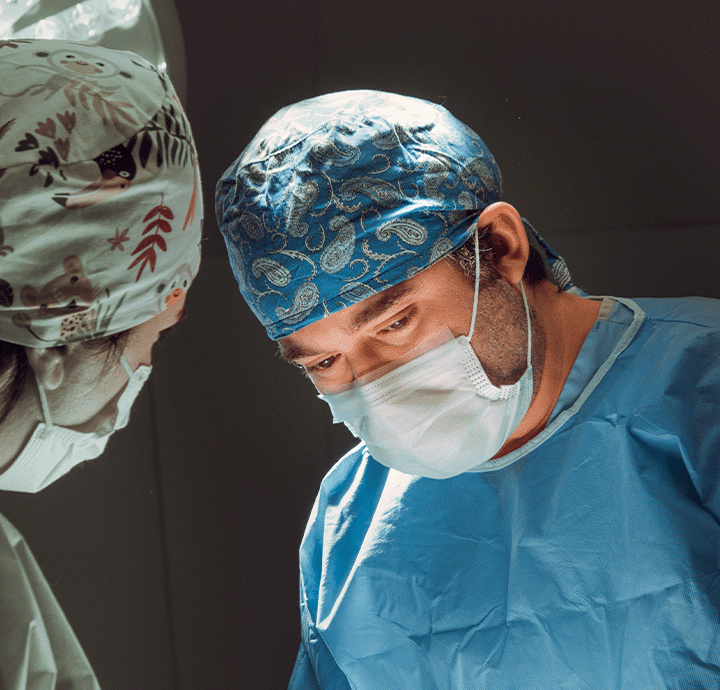
What Is Revision Rhinoplasty?
Revision rhinoplasty or secondary rhinoplasty is an operation that is operated on patients who have undergone a previous rhinoplasty surgery and have not achieved the desired result. After the first rhinoplasty surgery, the expectations of the patient and the surgeon may not be met or the new nose shape obtained may have changed over time. Second rhinoplasty surgery is needed in this case to eliminate the emerging aesthetic and/or functional problems.
Not all revision rhinoplasty surgeries are performed to correct a very large deformity. Considering that approximately 3-5% of the secondary interventions are required after rhinoplasty operations, it can be said that most revision procedures are needed to add a small contour to the nose or to make a minor retouching. Such revision surgeries are called minor. However, in some cases, major revision surgery may be needed.
In Which Cases Is Revision Rhinoplasty Required?
The most common causes of revision rhinoplasty include wide or asymmetrical nostrils, low, drooping, or excessively raised nasal tip, incompletely straightened nasal ridge, and collapse of the nasal walls. If they are not accompanied by breathing difficulties, it is possible to consider most of them as minor revision procedures.
It is considered a moderate problem if the factors that negatively affect respiration are due to asymmetry; but if it is due to loss or deterioration in bone and cartilage structures, it is considered a major problem.
When Is Revision Surgery Done?
Rhinoplasty surgery has a long recovery period, so it is necessary to wait at least 6 months to 1 year to decide whether a secondary operation is needed. Most revision surgeries are performed one and a half years after the first surgery.
The patient’s condition plays a role in clearly determining when the surgery will be performed. If the complaints are only supported by aesthetic concerns, the completion of the healing process should have waited. It is more beneficial to intervene without delay in functional complications that reduce the patient’s quality of life that don’t have a chance to improve over time and cause breathing difficulties.
 How Is Revision Surgery Performed?
How Is Revision Surgery Performed?
Revision surgery requires a more gentle and delicate work than the primary operation because the skin and tissue are very important in this surgery. Some of the cartilage and bone tissues were removed and weakened in the previous surgery; therefore, cartilage is taken from the ear or ribs if there is not enough nasal cartilage to be used. The experience and composure of the surgeon determine the success of the surgery at this point. Since the reinforced cartilage tissue used is taken from the patient’s own body, a possible risk of allergic reaction is also prevented.
While minor revision procedures can be performed under local anesthesia, major operations are always performed under general anesthesia with an open rhinoplasty approach. The duration of the operation can vary between 30 minutes and 6 hours, depending on the area to be worked on and the size of the deformity.
After the Surgery
A splint and silicone nasal packing are placed outside and inside of the nose as in the first rhinoplasty surgery. The nasal packing and splint are removed 6-7 days after the operation.
After the operation, you need to rest for 10-14 days. You can try to sleep with a double pillow and keep your head elevated during recovery in order to reduce edema and swelling. As with the first surgery, bruising and nosebleeds will subside within a few weeks. Patients usually return to their social and professional lives within 2 weeks. They are expected not to tire themselves and to follow the recommendations of their doctors during these two weeks.
FAQ
Does revision rhinoplasty take longer to heal?
Although it varies according to the type of nose surgery, the recovery period for revision rhinoplasty is longer compared to primary rhinoplasty. The procedure usually takes longer than the first nose surgery. Since the tissues are medically treated, recovery takes a little longer.
How long do you have to wait for revision rhinoplasty?
Those who have nose jobs will wait between 6 months to 1 year to undergo secondary rhinoplasty. The degree of improvement of major complications such as swelling and inflammation is also considered. The doctor will determine the ideal time for revision rhinoplasty after the examination.
How many revision rhinoplasty can you have?
There is no specific upper limit for nose surgery, but it should not be concluded that everyone can undergo revision rhinoplasty as much as they want. Some patients may have a third rhinoplasty operation, while others may have fewer or more operations. Every medical operation involves certain complications, difficulties, and risks. In general, it is essential that the surgeries be performed safely and that the patient is suitable for the procedure.

 How Is Revision Surgery Performed?
How Is Revision Surgery Performed?